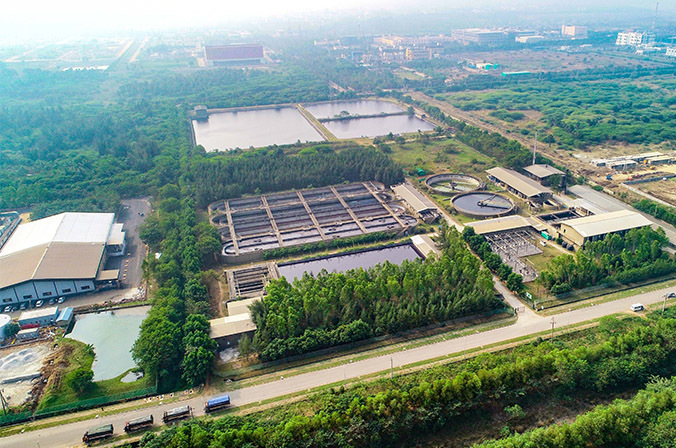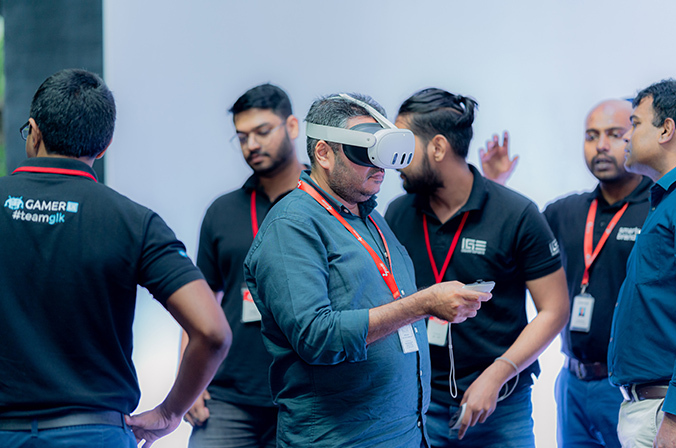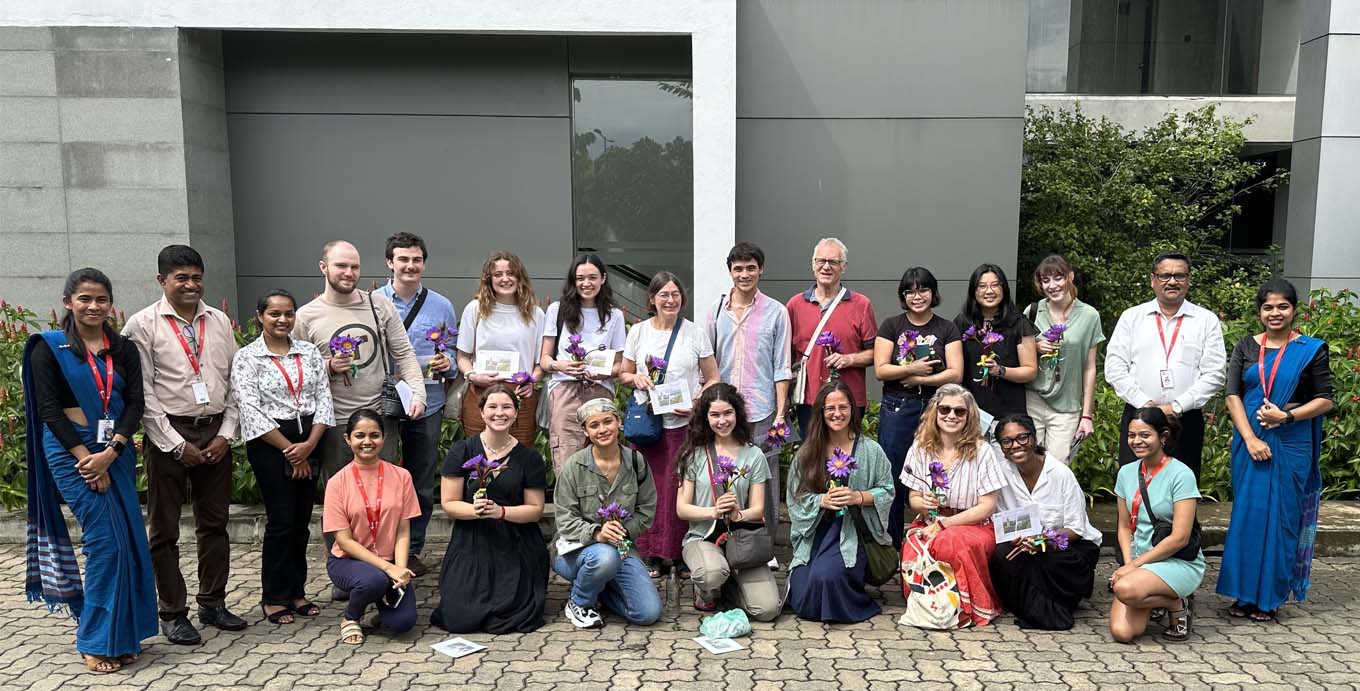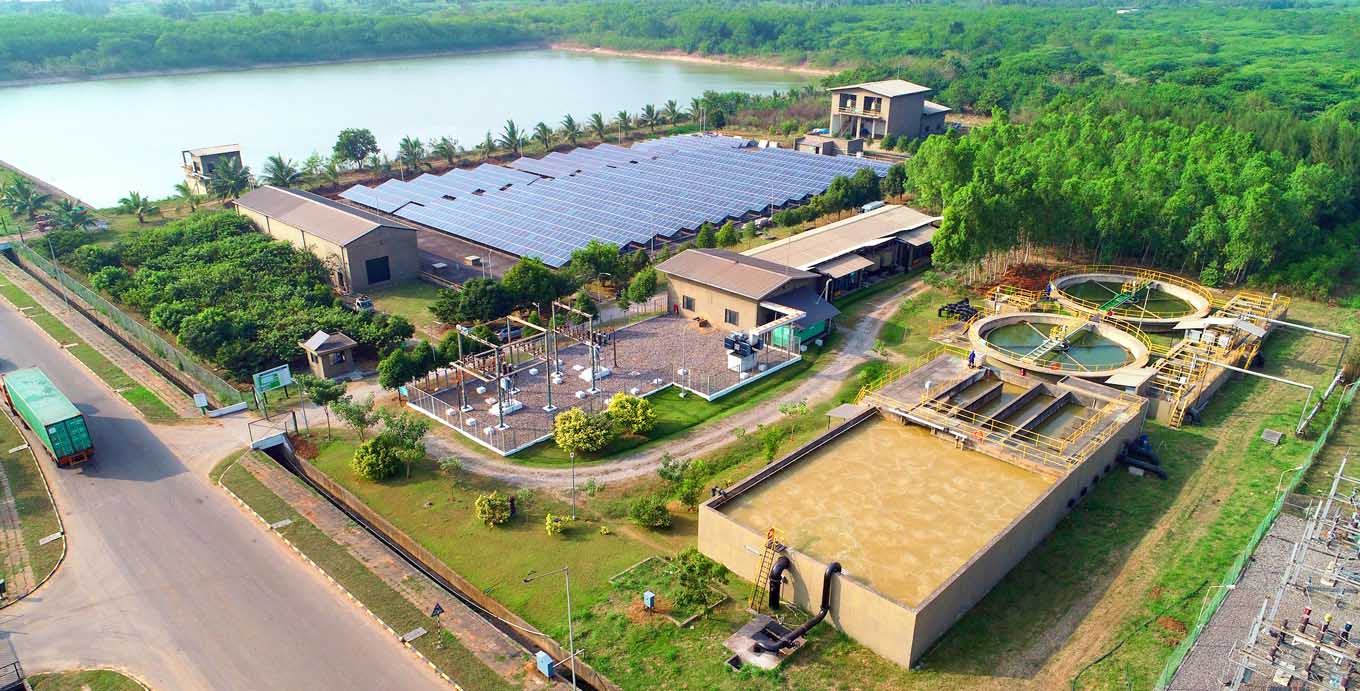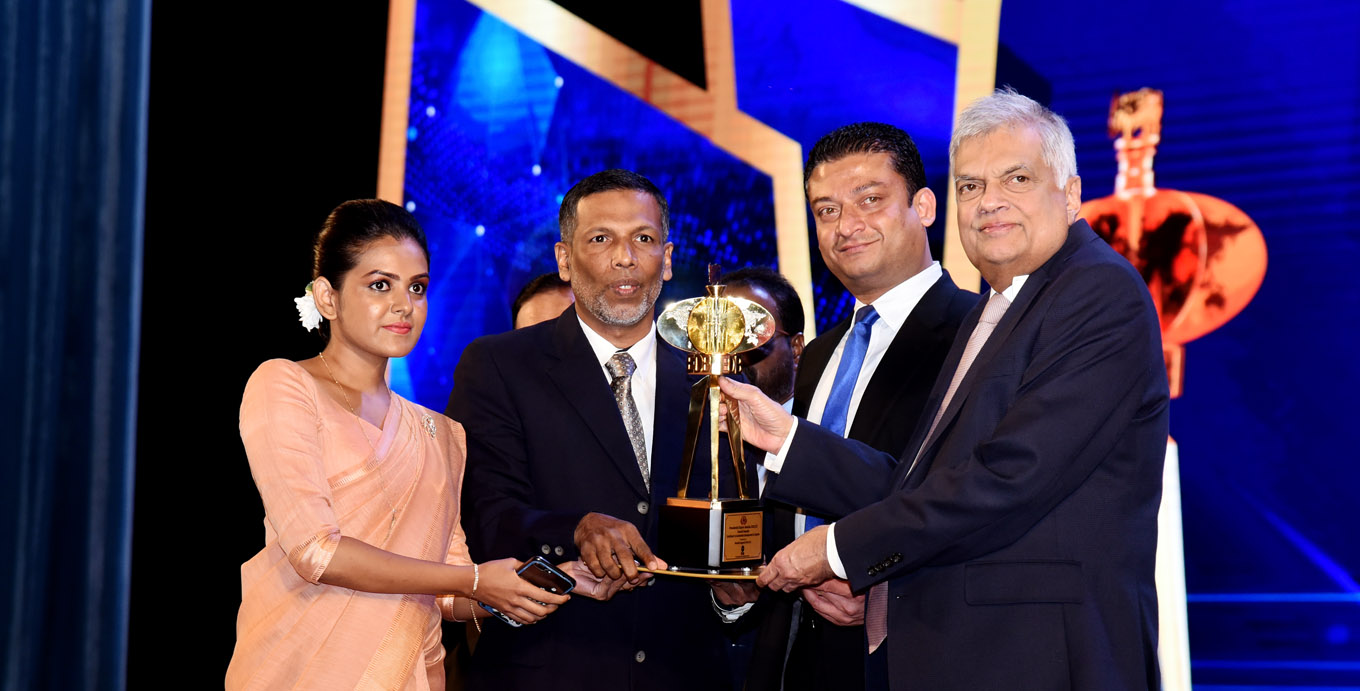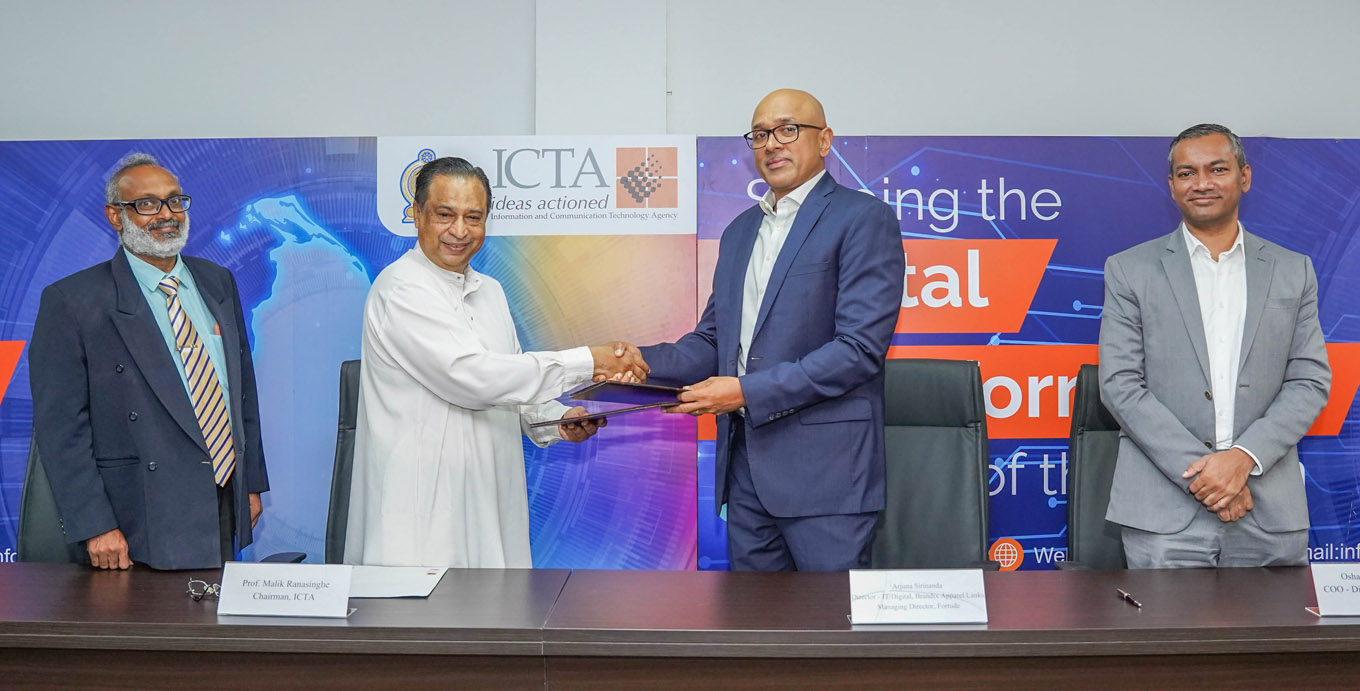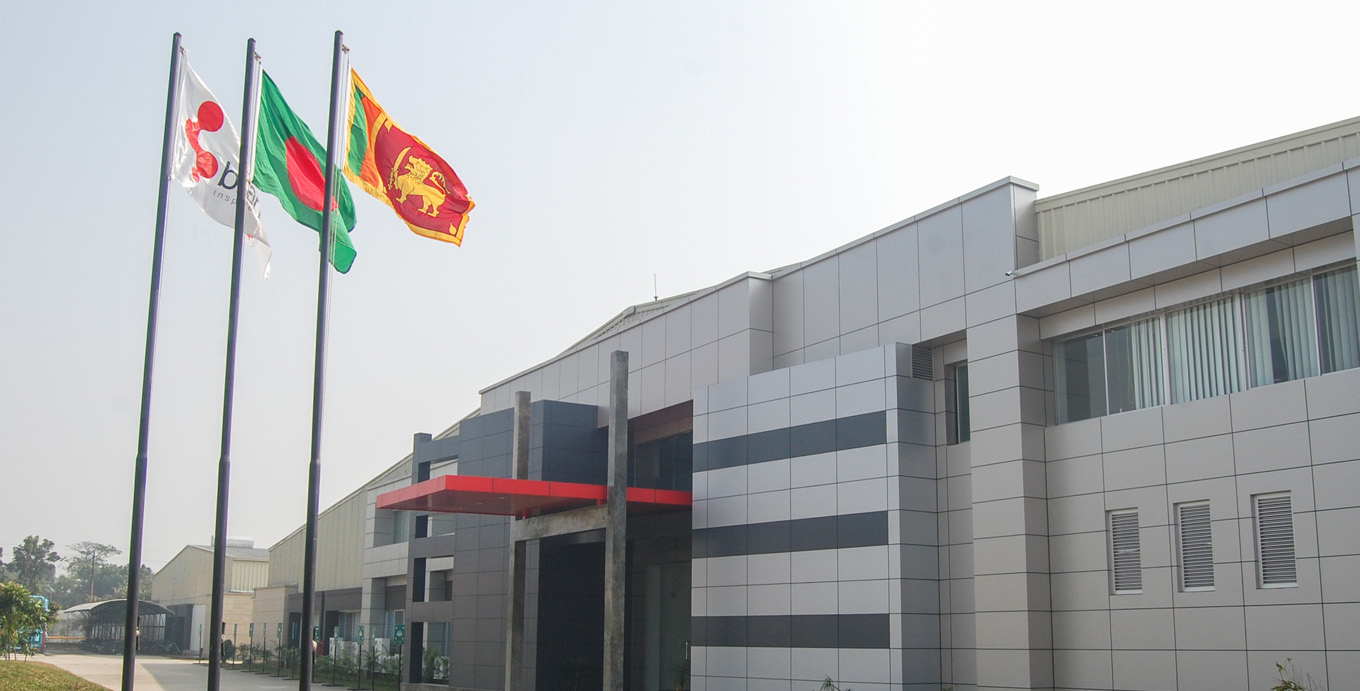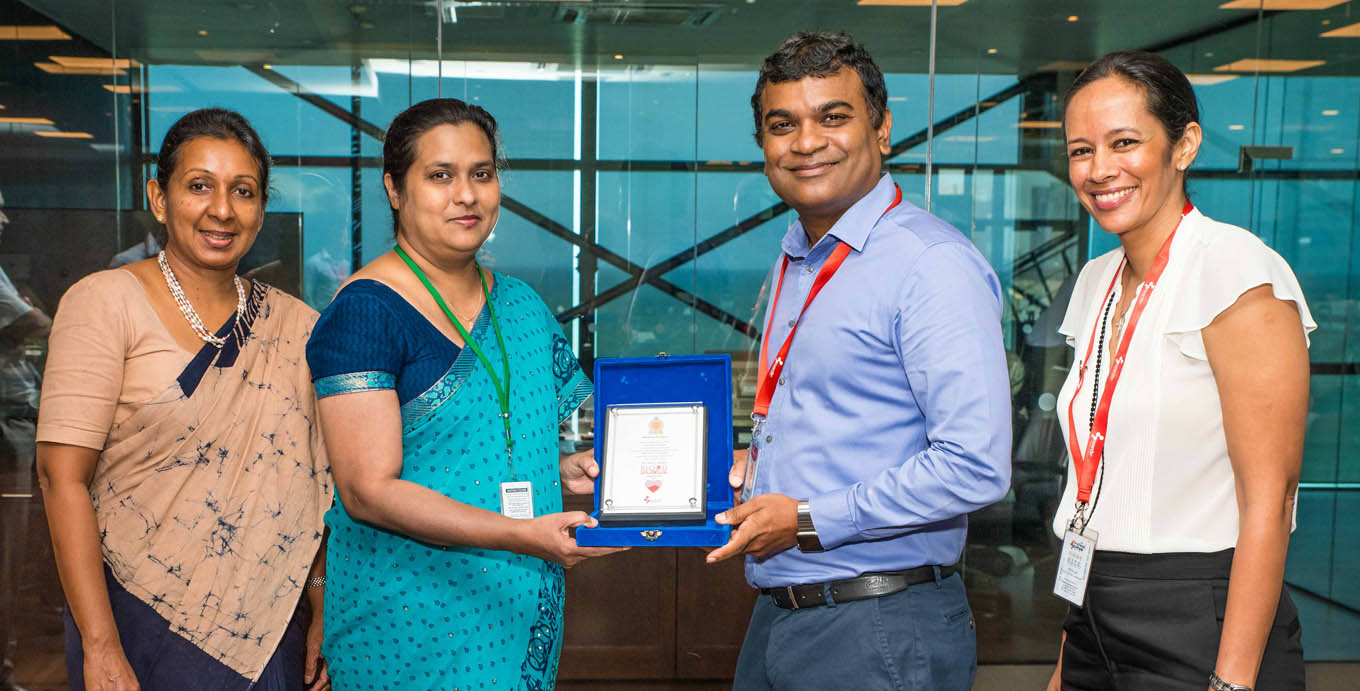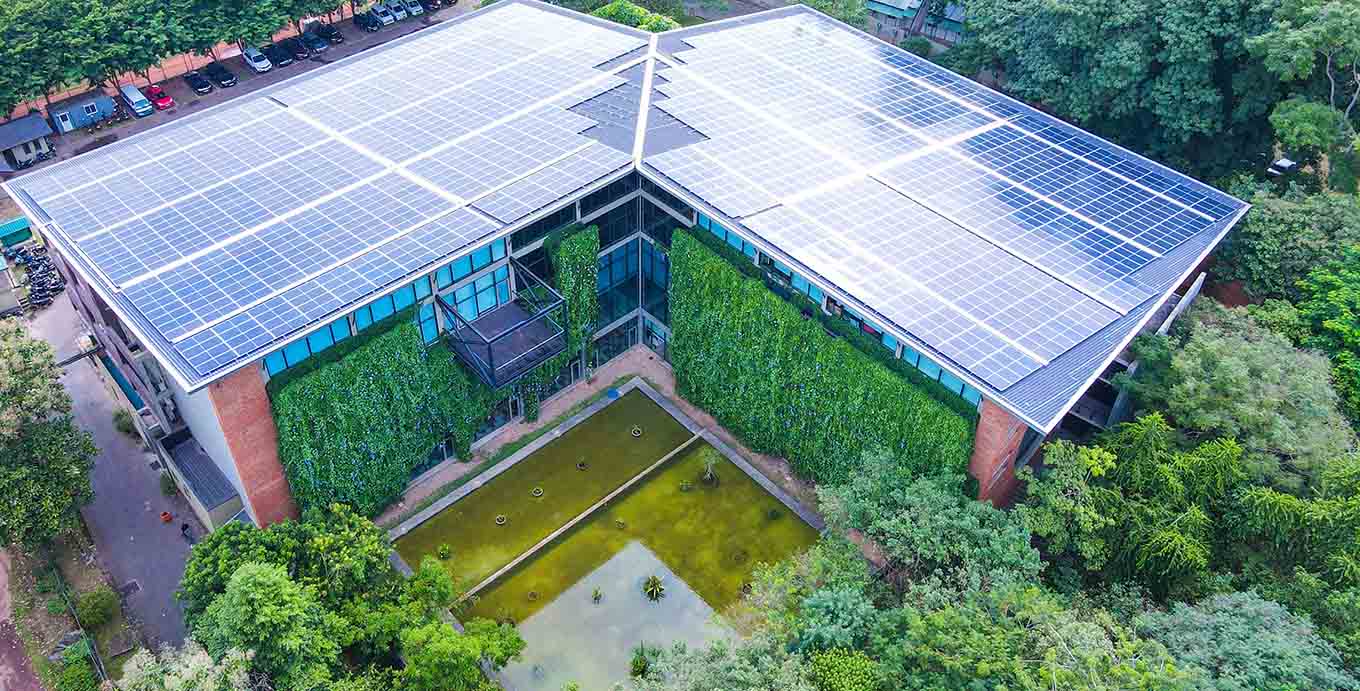In an era when catastrophic effects of global warming and climate change are increasingly tangible, Brandix acknowledges the urgency and embraces the responsibility of acting now. With a deep-rooted understanding of the planet’s pressing environmental challenges, the company has charted a proactive path towards sustainable operations.
Brandix’s commitment isn’t merely a response to the global crisis – it’s an assertion of its place at the forefront of global industry’s sustainability efforts.
Driven by this dedication, Brandix has set a bold target: to achieve ‘net zero’ carbon emissions across all its factories by 2030. Within a short time, this vision is being realised as six of its factories have been certified as net zero carbon apparel manufacturing facilities.
Brandix was already recognised as having the world’s first net zero carbon apparel manufacturing facility, coupled with being the planet’s first LEED Platinum certified apparel manufacturing facility.
And Brandix underscored its commitment to combat climate change and further work towards decarbonising its operations by becoming the first Sri Lankan signatory to The Climate Pledge. Brandix is also the only apparel manufacturer in the entirety of the Asia-Pacific region to sign the pledge.
A true sustainability champion, Brandix has established its robust credentials as a thought leader in environmental, social and governance (ESG) led sustainability in its race to nurture the planet.
In this interview, the apparel giant shares how its sustainability and business practices are impeccably interwoven so as to have a positive impact on the planet.
Q: How should organisations adopt a holistic approach to being environmentally sustainable?
A: At Brandix, we take a holistic approach to sustainability. Our accomplishments over the years – becoming the world’s first LEED Platinum rated apparel manufacturing facility and being declared the planet’s first net zero carbon apparel manufacturing facility – testify to our commitment to fulfil this promise.
Brandix wanted to differentiate its net zero ambition clearly from being carbon neutral, which refers to offsetting the total amount of carbon emissions through external means; while net zero carbon means balancing the emissions of a facility through on-site renewables. Its strategy focuses on reducing greenhouse gas (GHG) emissions through energy efficient production and transitioning to renewables.
Q: How important is it to merge sustainability-related measures into key performance indicators (KPIs)?
A: It’s very important – because otherwise, it will essentially be greenwashing or there won’t be any of the actual benefits reaped in implementing those sustainability initiatives.
Embedding sustainability in the work you do in terms of a performance metric is very important to walk the talk as it also ensures that the risks or potential constraints are highlighted in advance.
Q: In your opinion, has there been a significant change of focus from ‘saving the environment’ to ‘saving the economy’ in the context of the economic crisis?
A: In our view, saving the environment is synonymous with saving the economy. Brandix in particular prioritised the environment even during the economic crisis because we realised through past experiences that the two – economy and environment – are inseparable.
As the first net zero apparel manufacturing facility in the world, our facility is accruing benefits by way of lowered operating costs.
This is a perfect example of how saving the environment can save the economy.
Q: What steps can be taken from an apparel sustainability perspective to get back on track?
A: The first step would be to understand the burning issues that impact your business or industry alongside the impact these have on your stakeholders.
Materiality determination is seen as the fundamental step towards identifying and addressing the most critical ESG topics at Brandix. By focusing on these topics, we have been able to lead the industry in many of the same.
Q: Considering the dynamics of the labour market, economic challenges and climate change catastrophes, how do you think local corporates should balance the triple bottom line: ‘people, profit and planet’?
A: It is important to link people, planet and profit, which is what Brandix has done through its ESG framework. Sustainability is a much broader exercise than conserving energy, water and waste, which is why Brandix has aligned its approach to global frameworks such as the Sustainable Development Goals (SDGs) and the Ten Principles of the United Nations Global Compact.
We believe it is important to remain focused on the prioritised material topics.
Q: What particular steps towards sustainability were taken after the economic crisis?
A: In terms of environmental sustainability, Brandix prioritised resource optimisation and renewable energy by conserving resources – either through in-house developed technology or tweaks to an existing process – to render energy savings.
Against the backdrop of the economic crisis, digitalisation is prioritised and non-value adding activities eliminated to save time and resources.
Q: What do you feel are the most critical issues facing Sri Lanka’s natural environment that need attention?
A: From social and environmental sustainability points of view, water remains a significant concern, both in terms of consumption and availability, which can lead to a potential food crisis as well.
After experiencing an energy crisis, and considering the detrimental effects of carbon emissions and climate change on the planet, it’s evident that environmental factors are impacting Sri Lanka adversely.
Rising temperatures and sea levels leading to contamination of rivers can severely affect not only aquatic life but also, water used for crops; and ultimately, affect the nation’s food security.
Q: What are the green trends you’re seeing in the industry?
A: Renewable energy is in the news and now, we see the acceleration of digitalisation. From an apparel point of view, traceability – not only within our organisation but beyond, in terms of raw materials before they enter our facility, as well as finished goods up to the point of final disposal – is important. Traceability and product life cycle assessment therefore, are major trends that we are seeing.
Furthermore, sustainable raw materials – whether from recycled, upcycled or biodegradable materials – are something consumers are demanding. There are many sustainable processes across the apparel value chain such as waterless dyeing and so on.
Q: What are some of the recent initiatives for conserving the environment?
A: Brandix enhanced its renewable energy transition by investing in rooftop solar decks at selected manufacturing facilities in Sri Lanka and India. At present, these new installations have increased the group’s collective installed solar capacity to over 20 MW, allowing us to meet approximately 74 percent of the annual electrical energy requirement of all our apparel manufacturing facilities.
These efforts will enable Brandix Sri Lanka operations to reach the final phase of its net zero carbon transition with the formal certification process due to be concluded by financial year 2023/2024.
Net zero carbon implementation programmes for India and Bangladesh are underway, and will conclude certification process by 2025 and 2027 respectively, putting Brandix on track to be certified net zero carbon across all our facilities worldwide by 2030. Brandix hopes to add a further 9.7 MW of solar photovoltaics (PV) in India as part of the next phase of the solar installation project.
A part of our net zero carbon plan is to ensure that 100 percent of energy requirements are met through sustainable sources.
At Brandix India Apparel City (BIAC), rainwater is harvested through the park’s combined 665 million litres (ML) capacity ponds, from which BIAC has harvested approximately 1271 ML of rainwater over the past three years, accounting for 29.6 percent of the park’s total annual water usage.
Q: What are your future plans when it comes to environmental sustainability?
A: Going ahead, renewable energy would be significantly accelerated across our facilities; and this year, we hope to achieve approximately 21 MW of solar power in Sri Lanka and close to 10 MW in India, and intend to expand this to our facility in Bangladesh as well.
Digitalisation is at the forefront of our efforts, given the ‘smart factory’ concept we are working on to enhance the adoption of Industry 4.0 elements.
From a water perspective, we are working towards increasing our ‘greenwater’ footprint, which refers to our recycled water and harvested rainwater – with the ultimate goal of eliminating the use of ground water. Our goal is to recycle and reuse all of our waste; and ultimately, reincorporate waste material back into a supply chain through upcycling.
With sustainability engraved into the DNA, our primary focus is to reduce our negative impact on the planet, and leave a positive imprint on our people and communities in which we operate.
